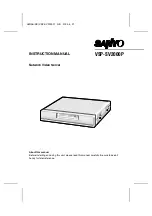
230 - 238 CCNA 2: Routers and Routing Basics v3.1 Instructor Guide – Appendix B
Copyright
©
2004, Cisco Systems, Inc.
B.5.3 Rubrics
Figure 1: Grading Rubric Sample
Another good instructional practice is the use of rubrics as a form of assessment. A rubric
allows criteria to be established for outcomes that are acquired through individual or group
projects. Levels of success and quality are identified at different levels of a predetermined
scale. Quantitative data can be associated with each level of performance. Rubrics assess
observable learning behavior, all curriculum content associated with a project, and other
components such as design, research skills, organization of thought, cooperative skills, and
the ability to communicate emerging knowledge. The rubric has two primary functions for
teaching and learning. Rubrics communicate expectations and give students a level of
achievement to work toward. One of the most important benefits of rubric assessment is the
control it gives to students. Students can create their own rubrics based on established
standards and performance objectives. Assessment occurs continuously through self-
monitoring and self-evaluation. Students who are given direction and the freedom to choose
their path of learning, are empowered to accomplish high levels of achievement.
For Academy courses, rubrics create specific expectation criteria for the final performance of a
lab or activity. In the demonstration of each task, there is a specific set of performance levels
for all objectives, content, and skills. Each rubric contains a criterion that defines the elements
that indicate learning proficiency. Many rubrics are based on a four-point scale, where four
points represent the best level. Each point on the scale has specific criteria that describe the
performance characteristics. Before an assessment of student interactions, classroom work, or
any performance lab or activity, students should be aware of the expectations. This will help
them begin the process of self-assessment as they progress through the individual tasks that
are reflected in the rubric.









































